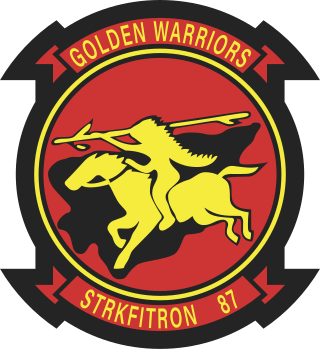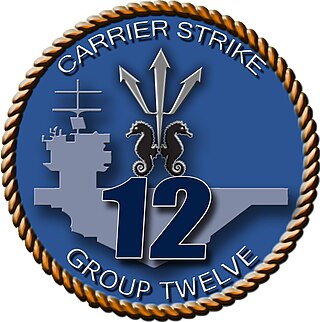
Big stick ideology, big stick diplomacy, big stick philosophy, or big stick policy refers to an aphorism often said by the 26th president of the United States, Theodore Roosevelt; "speak softly and carry a big stick; you will go far". The American press during his time, also many modern historians today, used the term "big stick" to describe the foreign policy positions during his administration. Roosevelt described his style of foreign policy as "the exercise of intelligent forethought and of decisive action sufficiently far in advance of any likely crisis". As practiced by Roosevelt, big stick diplomacy had five components. First, it was essential to possess serious military capability that would force the adversary to pay close attention. At the time that meant a world-class navy; Roosevelt never had a large army at his disposal. The other qualities were to act justly toward other nations, never to bluff, to strike only when prepared to strike hard, and to be willing to allow the adversary to save face in defeat.

USS Theodore Roosevelt (CVN-71) is the fourth Nimitz-class, nuclear-powered, aircraft carrier in the United States Navy. She is named in honor of Theodore Roosevelt, the 26th President of the United States and a proponent of naval power. She is the fourth ship named in honor of Theodore Roosevelt, three bearing his full name and a fourth with just his last name. Another three U.S. Navy ships have "Roosevelt" in their names in honor of members of the Roosevelt family. This carrier's radio call sign is "Rough Rider", the nickname of President Roosevelt's volunteer cavalry unit during the Spanish–American War. She was launched in 1984, and saw her first action during the Gulf War in 1991.
Several ships of the United States Navy have borne some version of the name Roosevelt in honor of members of the Roosevelt family.

VFA-31 or Strike Fighter Squadron 31 is known as the Tomcatters, callsign "Felix", a United States Navy strike fighter squadron stationed at Naval Air Station Oceana flying the F/A-18E Super Hornet. The Tomcatters are the second oldest Navy Fighter Attack squadron operating today.

Strike Fighter Squadron 15 (VFA-15) was an aviation unit of the United States Navy, based at Naval Air Station Oceana. The squadron was in service from 1 August 1968 to 31 May 2017, although the squadron had adopted the traditions of the first VA-15, which was established on 10 January 1942. The unit's nickname was "Valions" and its call sign was Pride.

The Strike Fighter Squadron 87 (VFA-87) is a United States Navy strike fighter squadron based at Naval Air Station Oceana. The squadron is equipped with the Boeing F/A-18E Super Hornet and is nicknamed the Golden Warriors, its call sign is War Party. Currently, the squadron is assigned to Carrier Air Wing 8.
Pete or Petes or variation, may refer to:
USS Theodore Roosevelt has been the name of more than one United States Navy ship, and may refer to:
Theodore Roosevelt (1858–1919) was the president of the United States from 1901 to 1909.
Big Stick was an unincorporated community in Raleigh County, West Virginia, United States. It lies along County Route 3/2, beside Winding Gulf. This community is part of the Winding Gulf Coalfield in Raleigh County.
Tread softly or tread-softly may refer to:

Alice blue is a pale tint of azure that was favored by Alice Roosevelt Longworth, American painter and daughter of Theodore Roosevelt, which sparked a fashion sensation in the United States.

Carrier Strike Group Twelve is one of four U.S. Navy carrier strike groups currently assigned to the United States Fleet Forces Command. USS Gerald R. Ford is the aircraft carrier assigned as the strike group's flagship. Units currently assigned to Carrier Strike Group Twelve included Carrier Air Wing Eight; the Ticonderoga-class cruisersVicksburg and Normandy; and Destroyer Squadron 2.

Airborne Command & Control Squadron 124 (VAW-124) "Bear Aces" is a United States Navy airborne early warning and control squadron based at Naval Air Station Norfolk, Norfolk, Virginia. It flies the Northrop Grumman E-2D Hawkeye and is currently attached to Carrier Air Wing 8 (CVW-8).

Brett Elliott Crozier is a retired captain in the United States Navy. A United States Naval Academy graduate, he became a naval aviator, first flying helicopters and then switching to fighters. After completing naval nuclear training, he served as an officer on several aircraft carriers. In spring 2020, he was commanding officer of the aircraft carrier USS Theodore Roosevelt when COVID-19 broke out among the crew. He was relieved of command by then-acting Secretary of the Navy Thomas Modly after sending a letter to Navy leaders asking that most of the crew be taken ashore which was subsequently leaked to the press. Crozier himself was also later diagnosed with the virus. He was reassigned to a shore position and retired in March 2022.

The severe acute respiratory syndrome coronavirus 2 (SARS-CoV-2), the cause of the COVID-19 pandemic, was detected on the aircraft carrier USS Theodore Roosevelt in March 2020 while she was at sea. Affected crew members were evacuated and the ship was ordered to Guam. The captain, Brett Crozier, wanted most of the crew to be removed from the ship to prevent the spread of the disease, but his superiors were reluctant. After several days Crozier e-mailed three of his superior officers and seven other Navy Captains, outlining a plan for the ship to be largely evacuated because the virus could not be contained on board. The letter leaked to the press, and the next day the Navy ordered most of the crew to be taken ashore, but the captain was relieved of command by Acting Secretary of the Navy Thomas Modly. Modly's order was controversial, and his later speech to the crew aboard Theodore Roosevelt was criticized. Modly resigned a few days later. By mid-April hundreds of crew members including Crozier had tested positive for the virus, and one had died.
This page is based on this
Wikipedia article Text is available under the
CC BY-SA 4.0 license; additional terms may apply.
Images, videos and audio are available under their respective licenses.









